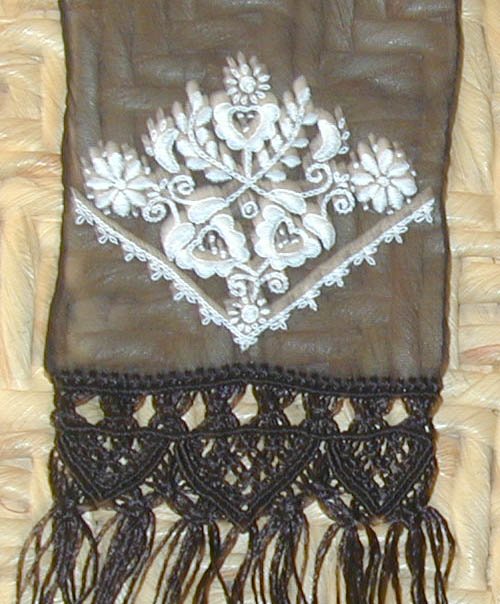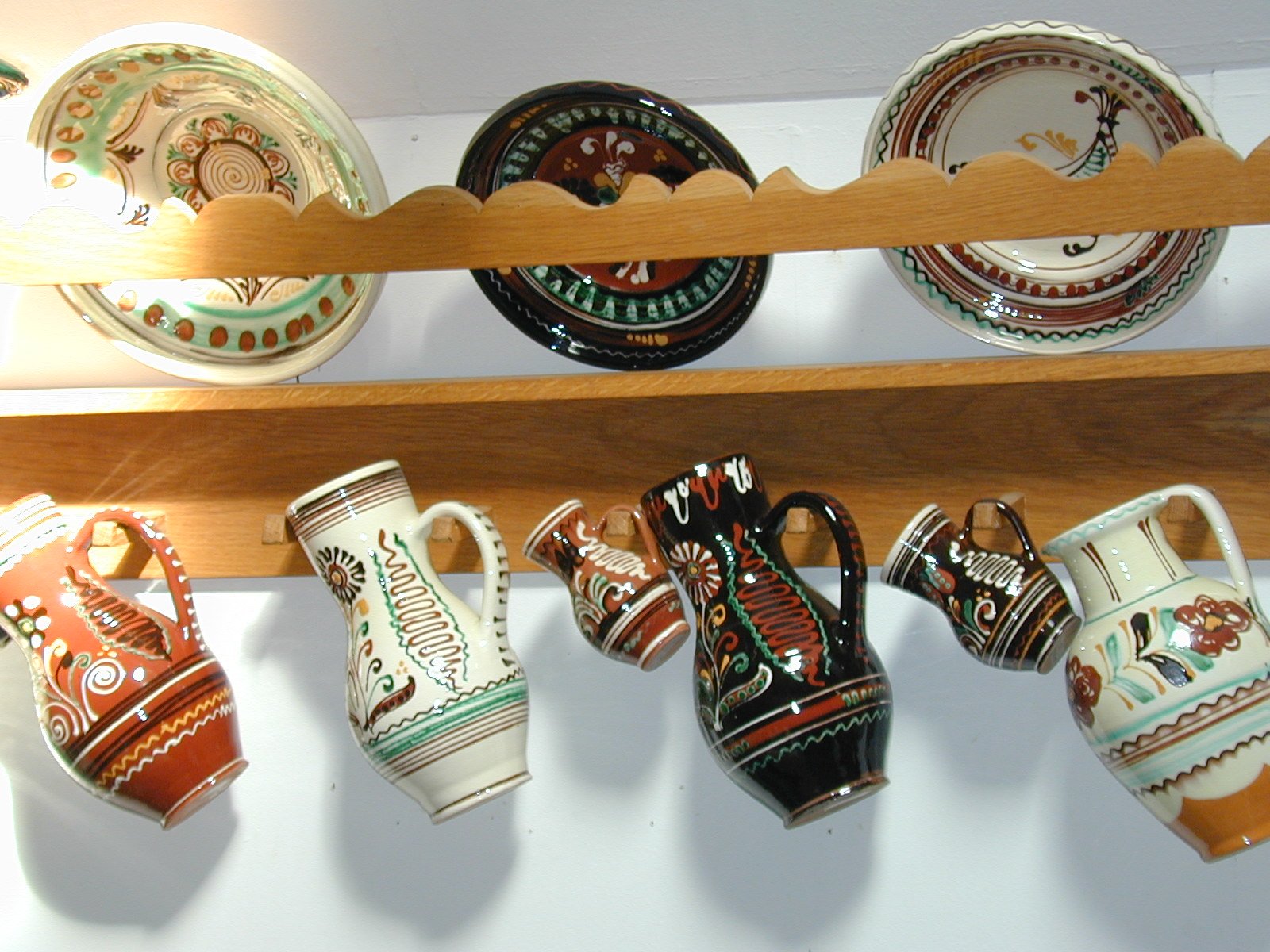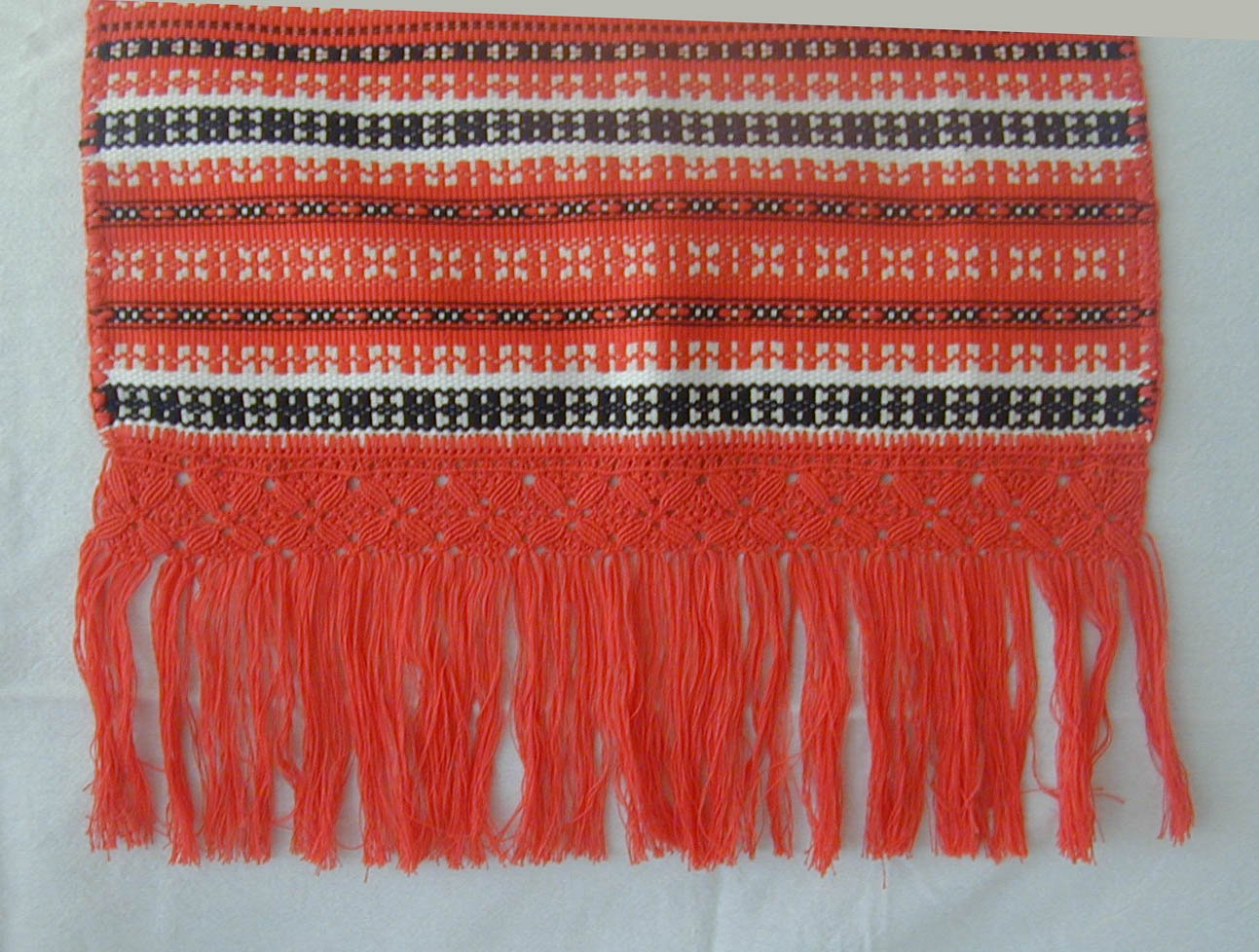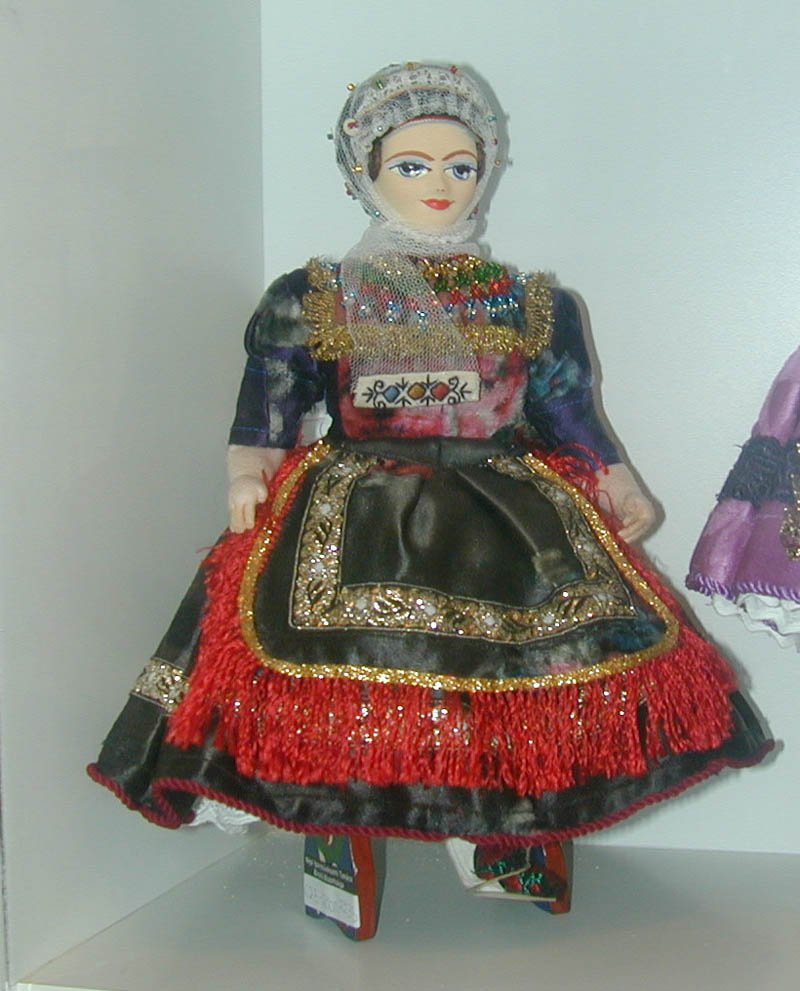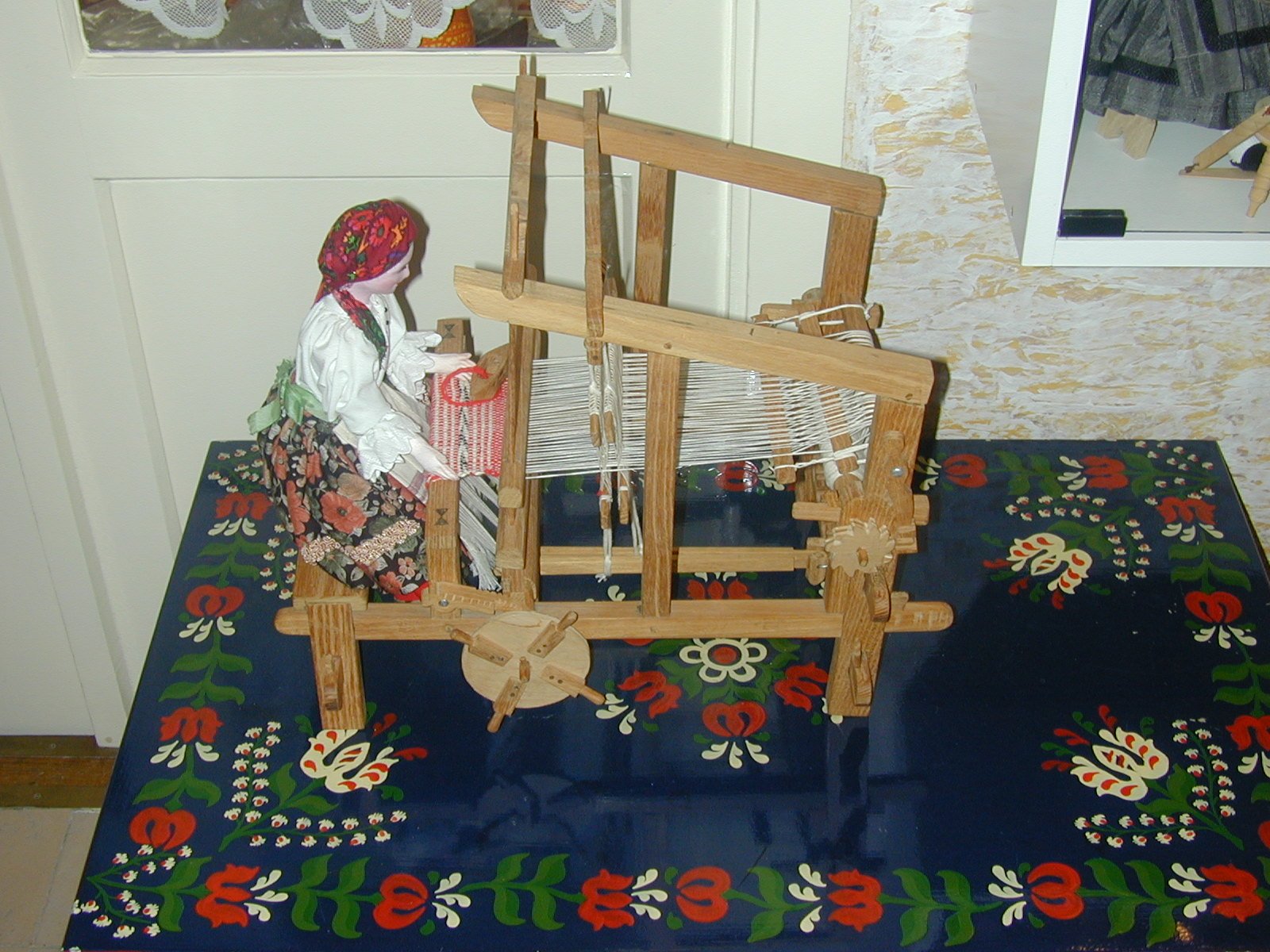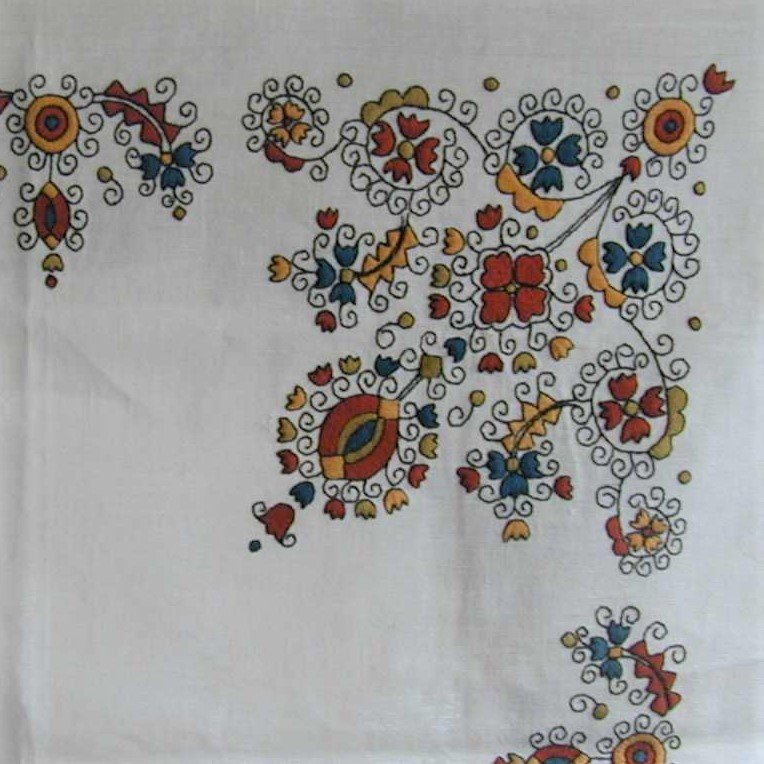Sárközi Folk Art
Handwoven textile, Sarkoz region. Hungary, 2001.
The Sárköz is a region of Hungary just west of the Danube and south of the city of Szekszard. It includes the villages Decs, Sarpilis, Ocseny, and Bata. Once a marshy area with frequent floods, it was transformed into fertile farmland after the regulation of the Danube in the mid 19th century. The people of the Sárköz grew crops, raised livestock, and tended vineyards in the nearby Szekszard hills. They were quite well off in comparison to other Hungarian peasant populations, and their rich folk art traditions reflected their wealth and high standard of living.
Sárközi folk costumes probably started to acquire their distinctive characteristics in the mid-19th century; they gradually started to take on more and more modern touches after the start of the 20th century, and they disappeared completely in the early 1950's. The women's costumes were especially important, as they were a way of displaying a family's wealth and status. The more embroidery and decoration, the wealthier the family. Besides telling you about the family's material wealth, by looking at a woman's costume you could determine her age, marital status, and whether she had children, or was in mourning, etc. There were also different costumes for work, leisure, and holidays. Most clothing was made from factory-produced fabric, much of which was imported from France by merchants in neighboring towns.
Traditionally, almost all embroidery was reserved for women's clothing. There are two distinctive types of embroidery done in the Sárköz. The first is very fine embroidery done in white thread on black silk, used for women's headbands. Several different stitches are used, and the patterns are usually floral but sometimes also include whimsical little animals. The other, better known style is done in geometric patterns on fine white linen. It was originally used to adorn the borders of women's headscarves, but after the decline of peasant folk costumes, it was adapted for use on table linens. The colors are subtle and harmonious with nature. Three stitches are generally used: the satin stitch, the Holbein stitch (used to outline pattern areas in black, and for curlicues), and the Biborveg stitch, which is made up of staggered parallel rows of Holbein stitches. The elegant Sárköz embroidery did not become as famous as the more brightly colored Matyó and Kalocsa styles, partly because the wealthy peasants of the region didn't have the need to create a cottage industry out of selling their needlework to outsiders. In fact, each family jealously guarded their patterns and preferred them to be admired from a distance!
Handwoven textile, Decs, Hungary, 2001.
Detail of embroidered Sarkozi pillowcase by Judit Boldizsar.
Other Crafts
The Sárköz, especially the village of Decs, is well known for weaving. You can find hand-woven textiles from Decs in folk art and souvenir shops throughout the country. Weavers use cotton, linen, and hemp in a wide variety of techniques and patterns. One almost lost craft being revived is that of knotting fringe used on the borders of textiles, similar to macramé. Other crafts popular in the Sarkoz include woodcarving and painting, pottery, beaded jewelry making, egg painting and basket weaving.
Decs is known today as the "capital" of the Sarkoz region and offers several attractions for visitors interested in Hungarian folk art and traditions. One place especially worth visiting is the Doll Museum, run by master craftswoman Erzsébet Farkas. Her exquisitely crafted dolls show the whole spectrum of the Sarkoz costumes, from young to old, from simple attire for washing to ornate wedding dresses. Ingenious little accessories illustrate the people's daily lives, such as the miniature weaving loom and the tiny clay baking dishes being carried home from the baker's. The museum also features hand-painted pottery, wooden furniture, and Easter eggs, also made by Mrs. Farkas. Other Decs attractions include the Faluház (village house) with exhibits on local arts and history, and a peasant-style house (tájház).
The photos in this article, originally published online in the early 2000s, were taken by the author (Donna Fenton) in 2001 with permission from the artisans.




